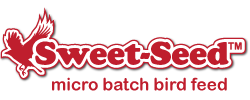Do Hummingbirds Nest in Houses?

Hummingbirds are sweet, tiny birds, and many birders naturally want to be sure these flying jewels have safe and comfortable nesting sites. There is nothing quite like witnessing a devoted mother hummingbird diligently caring for her chicks, but is a birdhouse the best answer?
Misleading Hummingbird Houses
Home decorating products and garden accents marketed as “hummingbird houses” aren’t actually suitable for these small birds to use. While the tiny houses – which are often polished wood with an acorn-like cap, wicker hanging baskets, or even small round gourds – can be charming as a decorative accent or part of a fairy garden, they aren’t the least bit useful for hummingbirds.
First and foremost, hummingbirds are not cavity-nesting species and do not seek cozy interior spaces for their nesting activities. While a female hummingbird will try to find a sheltered nook for her nest, she will not enter a small house or any other enclosed space.
Furthermore, the so-called hummingbird houses do not have the critical features all birds – of any size – need for comfortable, safe nests. These houses do not have drainage holes or adequate ventilation, nor are they usually of a suitable interior size even for such tiny birds.
But the houses look so nice, and they have photos of birds using them! With the use of AI-generated imagery and photoshopping always growing and getting harder to detect, it can look like hummingbird houses are indeed popular. Many of the birds pictured, however, are only artistic representations of hummer-esque birds and aren’t real species at all. Those that are real hummingbirds aren’t found in the locations claimed, and are only being used for artistic effect in exaggerated marketing photos.
A “House” Hummingbirds Will Use
There are several types of “houses” hummingbirds may indeed use for nesting, however. These are small nesting shelves that may include a slight overhanging house-like roof for shelter, a divot or indentation in the base for the hummingbird to begin building her nest, or pegs or screws on the shelf to serve as anchors for convenient nest construction. Some models may also include a small mesh reservoir stuffed with cotton fibers for the hummingbird to use, or faux leaves or flowers to add a touch of camouflage to the structure.
While these aren’t houses in the conventional bird house sense – box structures with interior spaces for birds to use – they can be placed where hummingbirds are likely to nest. Positioning these small nesting shelves under a gazebo, pergola, or porch roof can provide a more secure and sheltered space that may attract a nesting hummingbird and encourage her to move into the “house.”
Where Hummingbirds Really Nest
Rather than a stylized house, hummingbirds will seek out secure, sheltered spaces protected from predators and construct their nests in those locations. Thorny bushes, high up in tree branches, and underneath house eaves can all be prime real estate to a nesting hummingbird.
Because a hummingbird nest is only 1-2 inches in diameter, these birds often find ideal nesting sites in unique places. Hummingbird nests have been reported on porch lights, clotheslines, basketball nets, decorative light strands, and other unusual spots. Obviously, they are happy to make themselves at home wherever their nests are comfortable!
